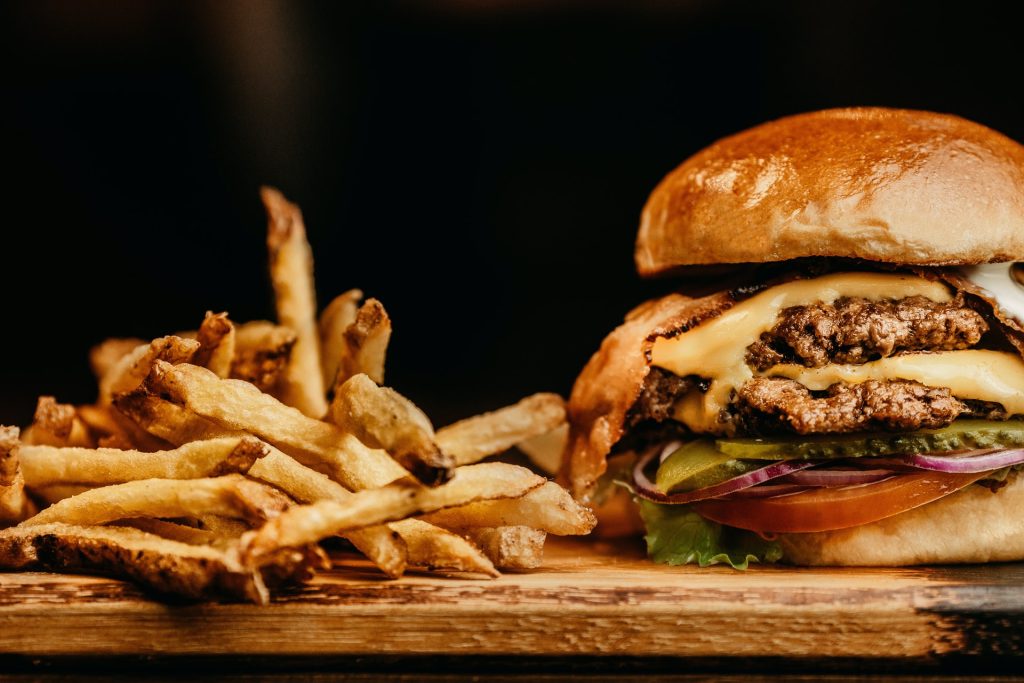American Diets got (Briefly) Healthier During the COVID Pandemic

American diets may have gotten healthier and more diverse in the months following the start of the COVID-19 pandemic, according to a new study led by Penn State researchers.
The study, published in PLOS ONE, found that as states responded to the pandemic with school closures and other lockdown measures, citizens’ diet quality improved by up to 8.5% and food diversity improved by up to 2.6%.
Co-author Edward Jaenicke, professor of agricultural economics in the College of Agricultural Sciences, said the findings provide a snapshot of what Americans’ diet and eating habits might look like in the nearly complete absence of restaurant and cafeteria eating.
“When dine-in restaurants closed, our diets got a little more diverse and a little healthier,” Jaenicke said. “One post-pandemic lesson is that we now have some evidence that any future shifts away from restaurant expenditures, even those not caused by the pandemic, could improve Americans’ food diversity and healthfulness.”
Prior to the pandemic, the researchers said, the average US diet was considered generally unhealthy. According to the Dietary Guidelines for Americans, eating patterns in the US have remained far below the guidelines’ recommendations, with only slight improvements in the population’s average Healthy Eating Index score between 2005 and 2016.
Also, before the pandemic, the research team was in the midst of a grant-funded project that asked how people would feed themselves after a giant global catastrophe, such as an asteroid strike or nuclear war. In particular, Jaenicke’s team was tasked with investigating how consumers and food retailers might behave during such a disaster.
“At first, the most impactful events we could study using actual, real-world data were hurricanes and other natural disasters,” Jaenicke said. “But then, along came the COVID-19 pandemic, and we realised that this event was an opportunity to study the closest thing we had to a true global catastrophe.”
For the study, the researchers analyzed data from the NielsenIQ Homescan Consumer Panel on grocery purchases, which includes 41,570 nationally representative U.S. households. Data consisted of the quantity and price paid for every universal product code each family purchased during the study period.
Data was gathered from both before the pandemic hit and after the pandemic led to schools, restaurants and other establishments temporarily closing. Because states did not respond to the pandemic simultaneously, the researchers designated each household’s post-pandemic period as the weeks following the date that their county of residence closed schools in 2020.
Jaenicke noted that this allowed the team to show a true causal effect of the pandemic school closures, which generally occurred around the same time that restaurants and other eateries also closed.
“To establish causality, an individual household’s pre- and post-pandemic food purchases were first compared to the same household’s food purchases from one year earlier,” Jaenicke said. “This way, we controlled for the food-purchasing habits, preferences and idiosyncrasies of individual households.”
The researchers found that in the two to three months following pandemic-based school closures (roughly March to June 2020) there were modest increases in Americans’ food diversity, defined as how many different categories of food a person eats over a period of time.
They also found larger, temporary increases in diet quality, meaning the foods purchased were healthier. This was measured by how closely a household’s purchases adhered to the U.S. Department of Agriculture’s (USDA) Thrifty Food Plan, which was designed to meet the requirements of the recommended healthy diet according to the Dietary Guidelines for Americans.
These patterns were found across households with many different demographics; however, those households with young children, lower incomes and without a car exhibited smaller increases in these measures.
“During the COVID-19 pandemic, dine-in restaurants closed, schools and school cafeterias closed, and many supermarket shelves were empty,” Jaenicke said. “Since about 50% of Americans’ food dollars are spent on ‘away from home’ food from restaurants and cafeterias, the pandemic was a major shock to the food system.”
The researchers said there are several possible explanations for these findings. First, because other studies have found that food from restaurants is often less healthy than food made at home, the dramatic decrease of meals eaten at and purchased from restaurants during the pandemic could have contributed to an increase of food diversity and healthfulness at home.
Second, they said it was possible that a global pandemic triggered some consumers to become more health conscious and contributed to them buying healthier, more diverse groceries. Third, because the pandemic caused widespread disruptions to the supply chain, it’s possible that when familiar products were sold out, consumers shifted to newer ones that led to increased diversity and healthfulness.
Finally, school and business closures may have led to many households having more time to cook and prepare foods than they had before, while others – like those with small children – may have had less free time than pre-pandemic.
Jaenicke said that in the future, additional studies could continue to explore how different disasters affect purchasing and eating habits.
Douglas Wrenn, associate professor of environmental and resource economics at Penn State, and Daniel Simandjuntak, research associate at Newcastle University, were also co-authors on the study.
Open Philanthropy helped support this research.
Source: University of Pennsylvania


